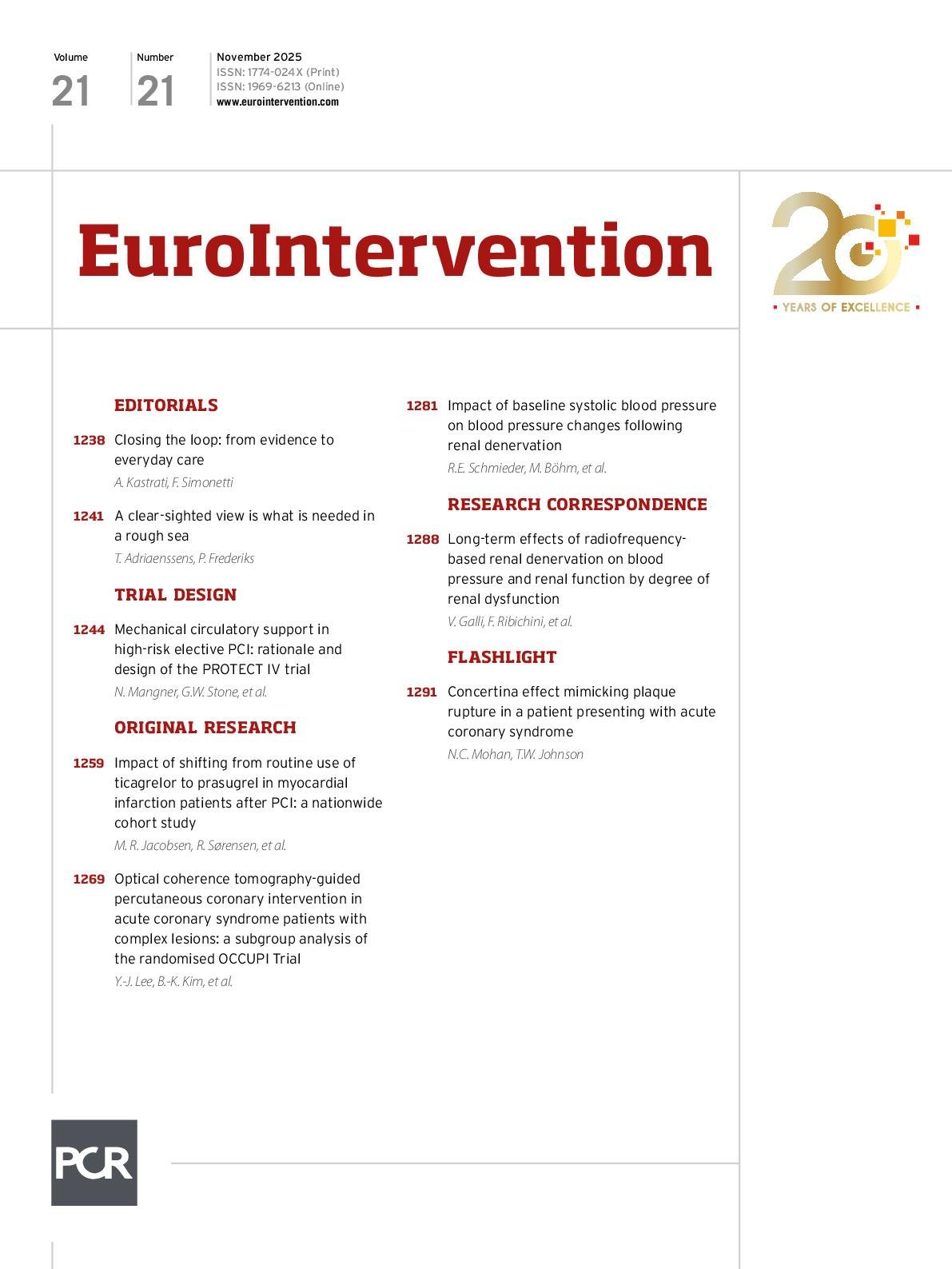We’re looking forward to seeing our friends and colleagues at London Valves in November. In the meantime, here is an assortment of exciting research that ranges from mechanical circulatory support to imaging, from antiplatelet therapy to renal denervation.
Rationale and design of the PROTECT IV trial
In the ongoing PROTECT IV trial, Norman Mangner, Gregg W. Stone and colleagues are assessing the effectiveness of haemodynamic support with Impella CP in high-risk patients with heart failure with reduced ejection fraction and complex coronary artery disease undergoing percutaneous coronary intervention (PCI) by randomising patients to either PCI with Impella CP or PCI with or without an intra-aortic balloon pump. The 3-year primary endpoint includes a composite of all-cause death, stroke, myocardial infarction (MI), unplanned clinically driven revascularisation, durable left ventricular assist device implantation or heart transplant, or hospitalisation for cardiovascular causes.
A shift in routine ticagrelor or prasugrel use for myocardial infarction
Mia Ravn Jacobsen, Rikke SÔ¸rensen and colleagues examine Denmark’s shift from ticagrelor to prasugrel use for MI patients treated with PCI. The authors map out the change in dual antiplatelet therapy orientation as well as the cardiovascular and bleeding rate outcomes which confirm that prasugrel is associated with reduced rates of major adverse cardiovascular events (MACE) and MI, although there were no differences in the bleeding rates. This article is accompanied by an editorial by Adnan Kastrati and Fiorenzo Simonetti.
OCT vs angiography in ACS patients
In a post hoc analysis of the OCCUPI Trial, Yong-Joon Lee, Byeong-Keuk Kim and colleagues focus on acute coronary syndrome (ACS) patients undergoing PCI for complex lesions with drug-eluting stents. The 1-year MACE rate was significantly reduced in those who had optical coherence tomography (OCT)-guided PCI compared to those who had angiographic guidance, and this benefit was particularly found in patients whose stent optimisation was achieved by OCT. In an accompanying editorial, Tom Adriaenssens and Pascal Frederiks discuss the underlying mechanisms that may be at work.
Blood pressure changes following renal denervation
Roland E. Schmieder, Michael Böhm and colleagues search to better understand the predictors of blood pressure (BP) reduction by evaluating the change between baseline and expected systolic BP (SBP) after renal denervation (RDN) in a pooled analysis of five clinical studies. The authors find that higher baseline SBP was associated with greater SBP reduction at 6 months after RDN; although it cannot provide an exact prediction, this can help guide the decision-making process for interventionalists and their patients.
Renal denervation and kidney disease
How does RDN affect BP and renal function over the medium- and long-term in patients with chronic kidney disease (CKD)? Verdiana Galli, Flavio Ribichini and colleagues address this question in a research correspondence that finds RDN to be safe and effective in selected CKD patients and possibly having benefits that extend beyond BP reduction.

